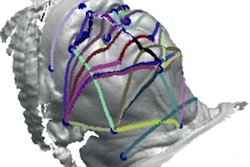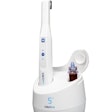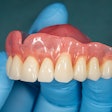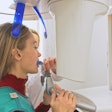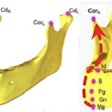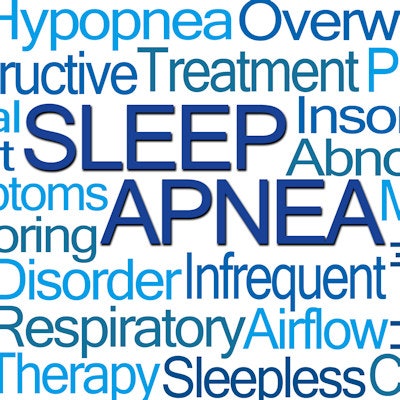
Here's another reason to screen your patients for obstructive sleep apnea (OSA): A new study has found that coronary flow reserve is impaired in patients with severe OSA, putting them at risk for cardiovascular disease. The research was presented on June 24 at the Society of Nuclear Medicine and Molecular Imaging (SNMMI) annual meeting in Anaheim, CA.
Researchers used positron emission tomography and computed tomography (PET/CT) to evaluate the cardiovascular disease risk factors in 38 patients with severe OSA (mean age, 42 years). They divided the patients into three groups depending on their apnea-hypopnea index (AHI):
- The mild OSA group included 14 patients with five events per hour and an AHI of less than 15.
- The moderate OSA group included eight patients with 15 events per hour and an AHI of less than 30.
- The severe OSA group included 15 patients with an AHI of 30 or higher.
The patients' myocardial blood flow and coronary flow reserve were calculated after imaging. Coronary flow reserve is an early sign of plaque accumulation in arteries (atherosclerosis).
While the researchers reported no significant differences in mean rest myocardial blood flow between the groups, they found significant differences in coronary flow reserve among the three groups, with it being lower in the group of patients with severe OSA (see table below).
| Comparison of blood and coronary flow between OSA groups | |||
| Mild OSA group | Moderate OSA group | Severe OSA group | |
| Mean rest myocardial blood flow | 0.97 ± 0.33 ml/g/min | 0.82 ± 0.11 mL/g/min | 0.94 ± 0.22 mL/g/min |
| Mean hyperemic myocardial blood flow | 3.20 ± 1.01 mL/g/min | 2.72 ± 0.88 mL/g/min | 2.56 ± 0.64 mL/g/min |
| Mean coronary flow reserve | 3.42 ± 0.80 | 3.42 ± 0.95 | 2.74 ± 0.49 |
Coronary flow reserve, an indicator of coronary microvascular function, is significantly impaired in patients with severe OSA, the researchers concluded.
"Our study suggests that patients with OSA, especially severe OSA, should receive PET myocardial perfusion imaging as early as possible to exclude coronary microcirculatory dysfunction," stated lead author Ruonan Wang, MD, in a SNMMI press release. Dr. Wang is affiliated with the First Hospital of Shanxi Medical University in Taiyuan, China.




